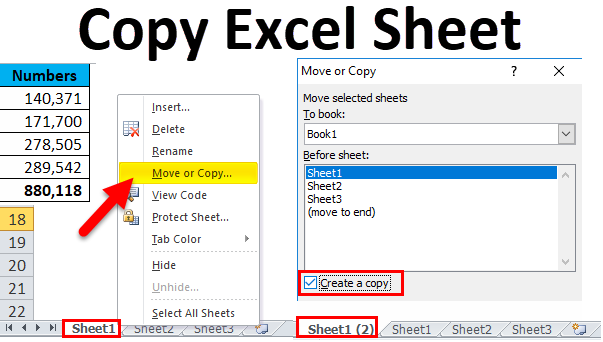5 Ways to Copy Excel Templates to Another Sheet

The use of Excel templates can significantly boost productivity by standardizing data entry and ensuring consistency across documents. However, there might come a time when you need to replicate an existing template to another sheet or workbook. Here, we'll explore five effective methods to copy Excel templates and streamline your workflow.
Method 1: Copy and Paste

Perhaps the most straightforward approach to copy a template is using the traditional copy and paste functionality:
- Select the entire worksheet by clicking the triangle icon where the row and column headers meet.
- Right-click, choose “Copy” or press Ctrl + C on your keyboard.
- Move to the destination sheet, select the cell where you want to paste the template, and press Ctrl + V or right-click and select “Paste” from the context menu.
- Adjust any formulas or references if necessary.
⚠️ Note: Copying and pasting can sometimes bring over unwanted formatting or errors from the original sheet. Double-check your data after pasting.
Method 2: Move or Copy Sheet

Excel offers an intuitive way to copy an entire sheet with minimal effort:
- Right-click the tab of the worksheet you want to copy, then select “Move or Copy.”
- In the dialog box, choose the location where you want the copy to be placed within the current workbook or even into a new one.
- Make sure the “Create a copy” checkbox is ticked.
- Click “OK,” and Excel will duplicate the template sheet at your selected location.
Method 3: Template File Integration

If your template is stored in a separate Excel file, you can merge it into your current workbook:
- Open the file containing your template.
- Use the method outlined in Method 2 to move or copy the template sheet into your working file.
- Make sure to check for and resolve any name conflicts or links within the spreadsheet.
| Action | Description |
|---|---|
| Open Template File | Access the Excel file with your stored template. |
| Move or Copy | Use Excel’s built-in feature to copy the template into your current workbook. |

Method 4: Import External Data

Importing templates can be particularly useful if you’re dealing with data from different sources or files:
- Go to the “Data” tab in Excel.
- Select “Get External Data,” then choose “From Other Sources.”
- Select “From Microsoft Query” or “From Workbook” depending on your setup.
- Follow the wizard to import the data from your template into a new or existing sheet.
🔍 Note: Importing external data can be complex; ensure you understand your data source and how it will integrate with your current workbook.
Method 5: Using VBA for Automation

For those who want to automate the process, Visual Basic for Applications (VBA) scripting can be incredibly efficient:
- Press Alt + F11 to open the VBA editor.
- Insert a new module from the “Insert” menu.
- Write or paste in a VBA script that copies a sheet or workbook. Here’s a basic example:
Sub CopySheetTemplate() Sheets(“YourTemplateName”).Copy After:=Sheets(Sheets.Count) Sheets(Sheets.Count).Name = “Copied Template” End Sub - Run the macro by pressing F5 or from the Excel interface.
VBA scripting allows for custom automation and can handle complex tasks effortlessly.
Each of these methods offers a unique approach to replicating Excel templates, fitting different needs and expertise levels. Whether you're looking for simplicity, integration, or automation, there's a method for you. Choosing the right one depends on your specific requirements, like the number of times you need to copy the template, how frequently you perform this task, or if you need to adjust data references post-copy. Always ensure that you review the copied data to catch any issues that may arise, especially when dealing with formulas or external links. With these methods at your disposal, replicating Excel templates becomes an easier part of your workflow, allowing you to focus more on data analysis and less on data setup.
What is the simplest method to copy a template?

+
The simplest method is typically the copy and paste technique, which involves selecting all cells in the template sheet and pasting them into a new sheet.
Can VBA be used to copy multiple templates at once?

+
Yes, VBA can be scripted to copy multiple templates or sheets, making it a powerful tool for automation and mass replication of data.
Do any of these methods preserve the original template’s links and formulas?

+
All methods described will preserve links and formulas, though you might need to adjust some references post-copy to ensure they work correctly in the new location.
Is there a way to automate template copying when opening Excel?

+
Yes, you can write a VBA script to run automatically when the workbook is opened, copying templates or performing other startup tasks.



